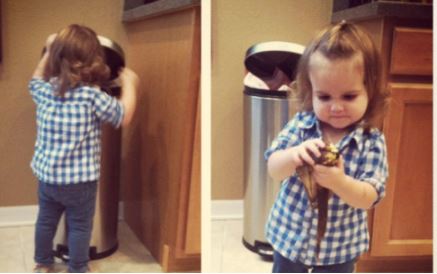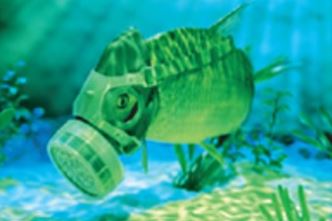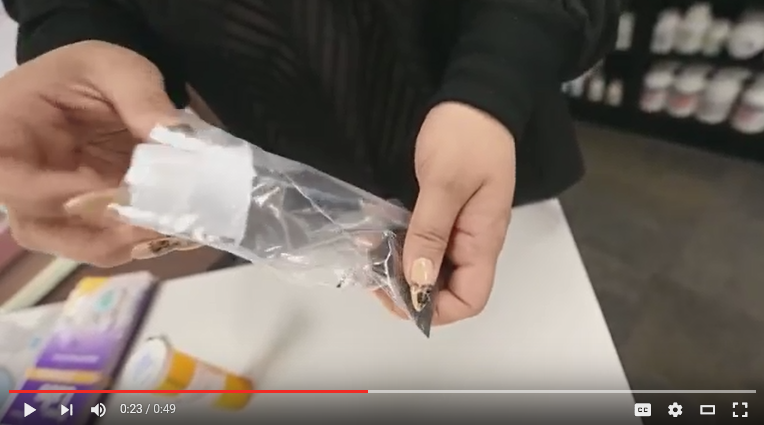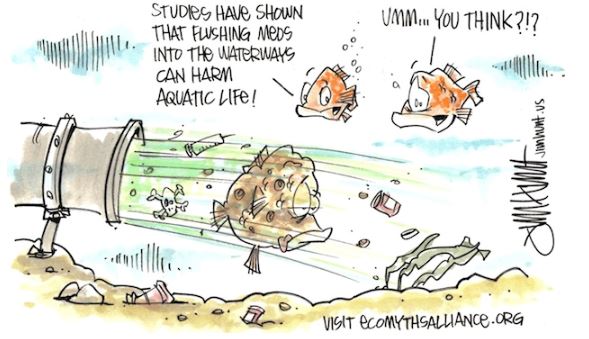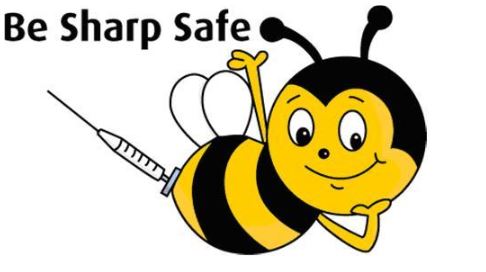Medication Disposal - Training Module
- Details
- Published: Monday, 06 June 2016 10:10
- Written by 340B Editor
This is article is designed as a training module for clinics, staff and patients. Scroll down page to complete training.
Introduction
On September 26, 2015, President Barack Obama, in his weekly address titled "Dispose of Your Expired and Unwanted Prescription Drugs", spoke about the importance of preventing and treating substance use disorders. Overdoses from prescription pain medications kill thousands of Americans every year, and more often than not, those drugs come from the family medicine cabinet. In addition, many heroin users started out by misusing prescription drugs. That’s why it’s important to take advantage of the DEA’s National Prescription Drug Take-Back Day and safely, conveniently, and responsibly dispose of expired and unwanted prescription drugs at collection sites throughout your community—no questions asked. Drug disposal programs are part of the President’s 2011 Prescription Drug Abuse Prevention Plan, which also included increasing education for prescribers, expanding Prescription Drug Monitoring Programs, and pursuing Smart on Crime enforcement. In his address, the President called on us all to continue to work to reduce substance use disorders through evidence-based treatment, prevention, and recovery.
Why Drug Disposal is Important
There are three main reasons why safer means of disposal are needed.
1. The first is that pills thrown in the trash could be stolen by people with the intention of using or selling them illegally.
More Americans now die every year from drug overdoses than they do in car crashes. And most of those deaths aren’t due to drugs like cocaine or heroin – but rather prescription drugs. In 2013 alone, overdoses from prescription pain medications killed more than 16,000 Americans. And most young people who begin misusing prescription drugs don’t buy them in some dark alley – they get them from the medicine cabinet.
Why Drug Disposal is Important
2. Medications in the trash could be accidentally found and consumed by children or animals.
According to the CDC, more than 60,000 young children in the U.S. are treated in emergency rooms each year for accidental overdoses because they got into medicines when their parent or caregiver wasn’t looking
Each year, one in every 150 2-year-olds is treated in an emergency room for an unintentional drug overdose, usually after finding and eating or drinking medications without adult supervision.
Why Drug Disposal is Important
3. Environment Hazards
Last but not least is the concern for the environment, as medications exposed to water or landfills could seep into the groundwater and cause health hazards to humans, plants, or other wildlife
According to the Oregon DEQ, scientists analyzed streams for 95 different organic wastewater contaminants, including pharmaceutical compounds. One or more of these wastewater contaminants appeared in 80 percent of the streams. Risks posed to aquatic organisms by long-term exposure to various pharmaceutical compounds are unknown. Wastewater treatment plants and septic systems usually do not treat or only partially treat pharmaceuticals, so chemical compounds from pharmaceuticals pass through treatment plants or septic systems to rivers or groundwater.
When to Take Drugs Back
1. First Week of the New Year. The New Year is always a good time to clean up, simplify and set resolutions
2. Third Week of March: Poison Prevention Week : http://poisonhelp.hrsa.gov/
3. April and September : "National Prescription Drug Take-Back Day" : http://www.deadiversion.usdoj.gov/drug_disposal/takeback/
The National Prescription Drug Take-Back Day aims to provide a safe, convenient, and responsible means of disposing of prescription drugs, while also educating the general public about the potential for abuse of medications.
4. All Days of the Year!
How to Dispose of Medications
There are a number of ways that your patients can safely dispose of their unwanted medications. If their medication comes with any disposal guidelines, they should follow those; for example some medications do recommend flushing down the toilet as the preferred means of disposal. If this information is not available to the patient they can look for drug take-back programs in their area. Information about these programs can be found by calling their local city or county government’s household trash and recycling services (found in the blue pages of the phone book) or looking at the Drug Enforcement Administration website for National Prescription Drug Take Back Days (www.deadiversion.usdoj.gov). If neither of these options is available to the patient, they can always take the medications out of their original containers, crush them, and mix with coffee grounds, kitty litter, or another undesirable substance and seal it in a plastic bag which can be thrown in the garbage. When disposing of the containers, tell your patients to scratch out any identifying information on the label before doing so.2 Finally, remind your patients that their local pharmacist would be happy to answer any other questions they may have about cleaning out their drug cabinet.
|
Medication Type |
Take Back Location |
Mix with water and dirt/kitty liter |
Walgreens Safe Medication Disposal Program ($2.99) |
Flush |
|
OTC |
Yes |
Yes |
Yes |
No |
|
Schedule III-IV |
Yes |
Yes |
Yes |
No |
|
Schedule II |
Yes |
Yes |
No |
|
|
Patches |
Yes |
No |
Yes |
Yes |
|
Inhalers |
Yes |
No |
Yes |
No |
|
Syringes |
No |
No |
No |
No |
Disposal Location
Under federal law, only law enforcement agencies and pharmacies can collect all types of unwanted and unused drugs. Search your local county or state for specific sites.
Examples:
Oregon
Washington
Items to Bring• Expired or unwanted prescription medications • Unneeded over-the-counter medication • Drugs that didn’t work for you, a family member, or pet • Drugs that are no longer used • Medication from deceased family members • Unknown tablets and capsules Please leave all medicines in their original containers if possible |
Items not to Bring• Thermometers • Needles/syringes • Medical waste of any type • Over the-counter items that are not medicines • Bathroom Products (shampoo, hair spray, deodorant, and other hygiene products, |
Self Disposal
If no medicine take-back programs or DEA-authorized collectors are available in your area, you can also follow these simple steps to dispose of most medicines in the household trash:1
-
Mix medicines (do not crush tablets or capsules) with an unpalatable substance such as dirt, kitty litter, or used coffee grounds;
-
Place the mixture in a container such as a sealed plastic bag;
-
Throw the container in your household trash;
-
Scratch out all personal information on the prescription label of your empty pill bottle or empty medicine packaging to make it unreadable, then dispose of the container.
1Consumers are advised to check their local laws and ordinances to make sure medicines can legally be disposed of with their household trash.
What About Flushing?
Most states and local government agencies do not promote flushing of medications. Community-based drug “take-back” programs offer the best option. However, according the FDA, to the main way drug residues enter water systems is by people taking medicines and then naturally passing them through their bodies. Many drugs are not completely absorbed or metabolized by the body and can enter the environment after passing through wastewater treatment plant.
Most drugs should be not flushed unless:
1. The risk of the misuse or accidental use of the medication is high
2. Instructions on the drug package instruct to do so
A list of drugs that can be flushed is at the FDA website:
Medicines recommended for disposal by flushing
Sharps and Medical Waste
Step 1: Place all needles and other sharps in a sharps disposal container immediately after they have been used.
Step 2: Dispose of used sharps disposal containers according to your community guidelines.
https://www.epa.gov/rcra/medical-waste#sharps
Oregon law prohibits the disposal of medical waste sharps such as; syringes, lancets, and needles, in with the regular waste. These items need to be handled separately in a specially designed, sealed, 1-gallon, “Sharps Container”, which will be incinerated at the Covanta facility in Brooks, OR.
For the safety of pets and children, we deliver and collect these containers directly to and from your front porch.
For residential service, just call Valley Recycling and Disposal: (503) 585-4300.
Commercial Medical Waste Collection is available by calling (503) 390-4000.
More Information
Many Videos and articles
Example:
1. Students at Pharmacy School: https://www.youtube.com/watch?v=PJWlf_VWSB8
In this training module you have learned the following:

1. Why drug disposal is important
2. When to take back medications
3. How to properly dispose of medications
4. Should you flush drugs down the toilet?
5. Where to dispose of medications
